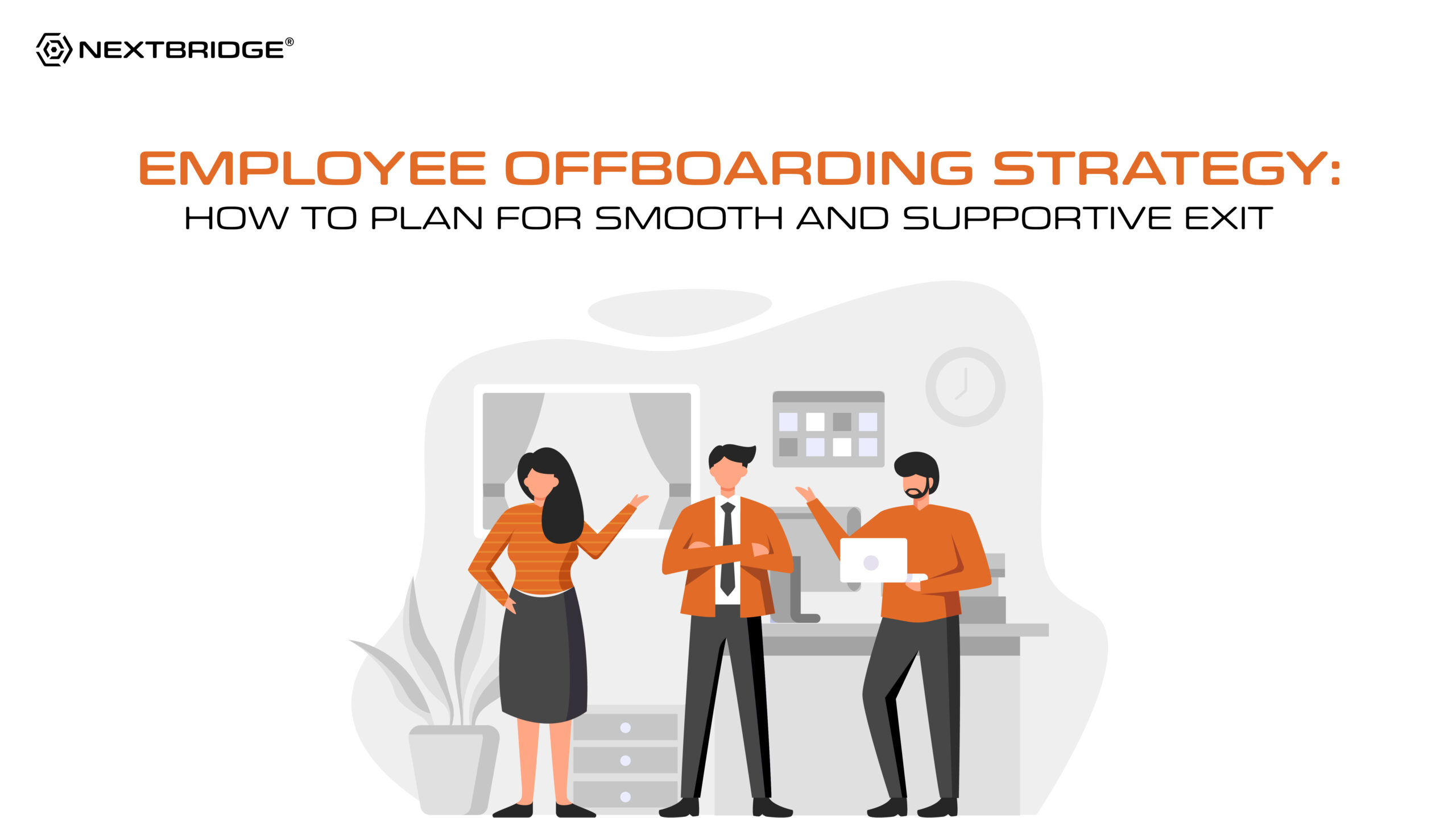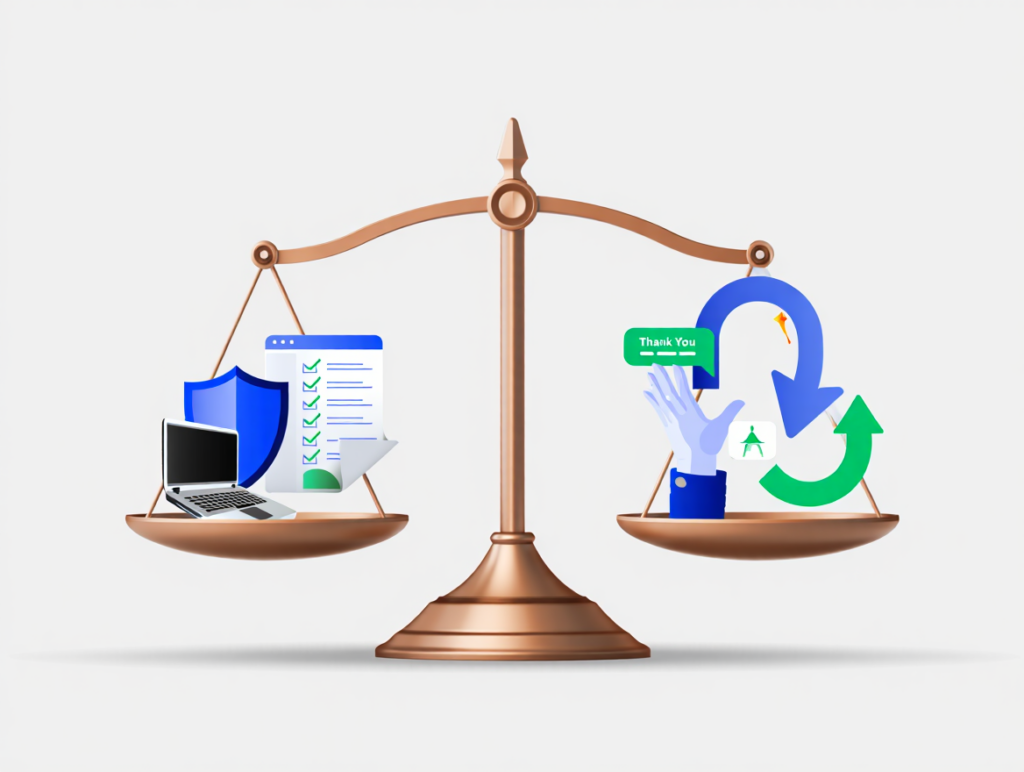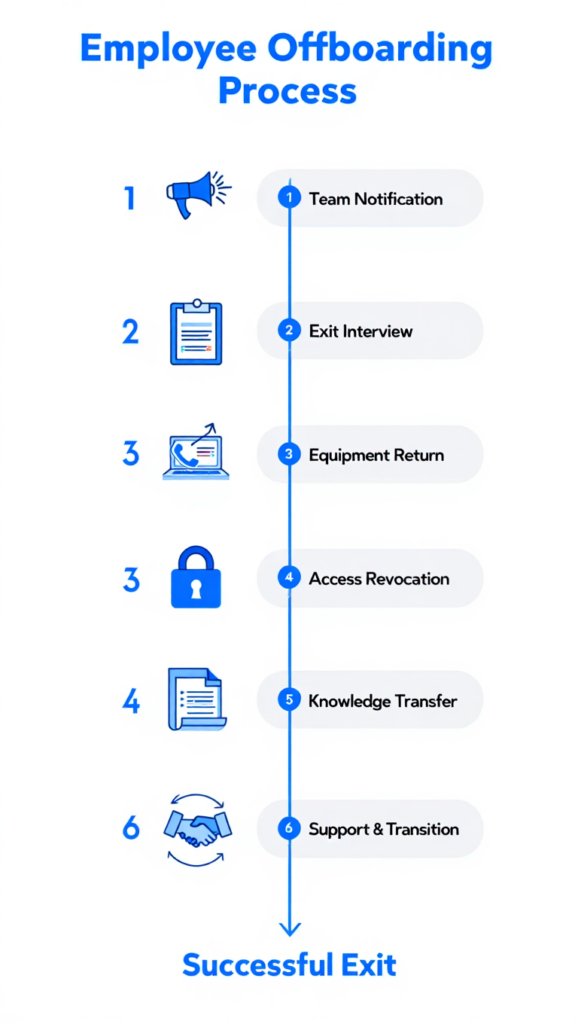 Back to all articles
Back to all articles
Blogs
Employee Offboarding Strategy: How to Plan for Smooth and Supportive Exit


Sometimes an employee decides to leave an organization, or sometimes the company asks them to leave, so either way it's okay, but the offboarding process should be smooth. It is HR’s responsibility to keep the offboarding process fully organized, take all the information from the employee, ask for important credentials, and end things on good terms.
It's essential to understand the process and know which steps are important to keep the process smooth and appropriate. In this thorough article, we are going to take a look at the offboarding process and exit strategy.
What is Employee Offboarding?
Employee offboarding is a simple procedure for departing employees when they leave an organization. This process is very important because, via this process, employees and managers go through some steps which make sure they leave on good terms. It includes the organization’s knowledge, conducting an exit interview, and completing all the HR requirements.
Offboarding has the advantage of preparing your team to work with fewer team members. It can also include sharing the previous tasks or responsibilities with the new employee.
Why Offboarding Employees Matters
Offboarding an employee is essential because it helps you get feedback from the employee. This includes its experience within an organization, as well as the issues and their solutions before the employee's last day. It is noticed that the employees who leave an organization on good terms speak positively about the company.
It means the company handled all the aspects of employee leaving in a very practical way. Some of the reasons why offboarding is essential because it:
- Decreases the security risks by claiming the company’s access and equipment
- Saves from the company’s devices and access to accounts
- Helps you collect feedback for improvements
- Manage the logistics of changes to the team
- Ends the employment on good terms
Employee Exit Plans and Strategies
The exit strategy is very important for a better offboarding of an employee, so it's important to plan this whole thing strategically.
Clear Exit Criteria and Documentation
Clearly define when and why the exit is happening, whether it's voluntary, performance-based, restructuring, or role elimination. Try to align your contracts, HR documents, and employee handbooks.
- Always document the performance-related issues
- Add all the policies for lay-offs, resignations, and terminations
- Also, track down all the written improvement plans and warnings
Communication Planning
When an employee leaves a company, it affects a lot of people. Good communication is essential to inform remaining staff, clients, and even stakeholders; they should know what's happening and what’s expected.
- Firstly, decide when/how the broader team should be informed
- Select who will notify the employee
- For clarity, use scripted communication
Knowledge Transfer and Role Transition
Try to retain the key institutional knowledge and make knowledge sharing a mandatory part of the exit process.
- Document all the key processes
- Assign successors/ point people
- Gather all login credentials, project status updates, and SOPS
- Exit Interviews and Feedback Collection
Exit interviews are helpful to get insights into culture blind spots, team morale, and leadership gaps. They should be optional conducted by someone neutral in the company.
- Don’t just gather feedback, work on it
- Keep it constructive and confidential
- Look out for patterns by using constructed questions
Related read: Employee Onboarding Process
Separation Logistics and Compliance
It includes everything from exiting a company with a paycheck to equipment return
- Use a checklist to ensure you are not missing anything
- Final payroll and unused PTO payout
- Remove access to credentials
- Benefits continuation details

The Employee Offboarding Process
Here are the key steps for an efficient offboarding process
Inform Relevant Teams
Notify the relevant teams as soon as the employee gives their resignation or terminates, starting with the finance department, then HR, IT, and the security team. Also, extra notifications will be mandatory, but it all depends on the departing employee’s designation. Offboard software tools can also be very helpful in this phase.
Conduct an Exit Interview
Plan an exit interview with every departing employee, whether it's in-person or online. Mainly focus on collecting the feedback and ensuring that the offboarding process is a very smooth transition for the team and the employee themselves. Jira is a platform that can help you collect the departing employee’s feedback.
Collect Company Property
It's a mandatory part of offboarding to collect all the company-owned property from the departing employee. Like device issues by the company, e.g., laptops, mobile phones, tablets, and access badges or cards.
Termination Access and Permissions
Instantly withdraw the departing employee’s access to the important company systems and database. Also, notify the departments and the relevant team about the revocation of that employee during the exit interview.
Share Knowledge
Urge each departing employee to write down in a document their process and workflows. It makes the knowledge transfer process faster to the department’s next person or team members. You can also keep this information in an accessible knowledge management platform.
Give Assistance & Support
Try to give an efficient and positive experience of offboarding to every departing employee. This includes the guidance and support throughout the whole offboarding process. It can start from the final paycheck receipt and include enough benefits to help get a new job, some mental and emotional support.

Employee Offboarding Best Practices
It's HR’s responsibility to build a detailed and comprehensive offboarding program that ensures a smooth transition while keeping the relationships positive. These are the best practices for employee offboarding.
Update Co-Workers
It's the HR’s responsibility to immediately inform team members about the departure of employees’ offboarding. This is a proactive approach to communication that helps in managing expectations and reducing the chances of rumors. Also, try to plan a team meeting or send an email to the whole company to ensure everyone knows.
Important Legal Documents
Keep the necessary documents prepared, like a resignation letter or termination letter, a non-disclosure agreement, and benefits documents. These documents are super beneficial in safeguarding both the team members and employers by ensuring compliance and clarity.
Regain company property
Keep an inventory of all the company property in the departing team member’s possession. It should include these items
- Laptops
- Phone
- Tablets
- ID card
- Access key
- Uniform
Most companies ignore this step and end up with major financial loss. Plan a specific time for all the essential returns to make sure everything is received on time.
Communicate With IT
HR needs to work closely with the IT department and timely inform them about the resignation or termination of employees. So the IT team can revoke the access of that person to the sensitive data to keep the company secure. This step is very important, and it saves the company’s data from unauthorized access.
Conclusion
A well-constructed employee offboarding is very important for both the departing person and the company. It helps you in ending a work relationship on positive terms and keeps the environment friendly. You can use offboarding tools for this purpose to keep the process smooth and hassle-free.
Don't hire us right away
talk to our experts first,
Share your challenges, & then decide if we're the right fit for you! Talk to Us
Partnerships & Recognition
Commitment to excellence






